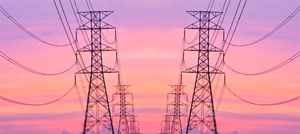
SPONSORED CONTENT -- (StatePoint) On average, Americans spend 90% of their time indoors, according to the Environmental Protection Agency, making indoor air quality critical to the health of families. The level of some pollutants in indoor environments can be two to five times higher than outdoor concentrations.
Through the new Healthy and Efficient Homes campaign, the American Lung Association is raising awareness of common sources of indoor air pollutants -- including gas-, propane-, oil- and wood-burning appliances -- and promoting practical short- and long-term solutions to address the associated health risks.
The Problem
In addition to cleaning products, mold, moisture and pests, the household appliances you use on a daily basis can impact indoor air quality. According to a comprehensive review of existing research, the American Lung Association has found that using appliances that burn methane (also known as “natural”) gas, wood, propane and heating oil can release harmful pollutants such as nitrogen dioxide, benzene and carbon monoxide in homes, while also contributing to outdoor air pollution and climate change. The review also found that the pollutants from these appliances increase the risk of breathing problems, asthma attacks, respiratory infections and other health harms, especially in children and older adults.
“Using these appliances can sometimes worsen asthma symptoms, cause wheezing and result in reduced lung function in children,” says Katherine Pruitt, national senior director of policy for the American Lung Association.
Solutions
If you rely on combustion appliances for heating, hot water or cooking, there are some immediate steps you can take to reduce your risk from exposure to harmful pollutants:
• Make sure your gas appliances are in proper working order.
• Install carbon monoxide monitors.
• Avoid unnecessary wood burning in your home.
• Use ventilation, either a range hood that vents to the outside or an open window or both, when cooking on a gas stove.
• For homes that rely on wood burning for heat or cooking, an air cleaning device that uses HEPA filtration can provide some protection from the soot and smoke.
As Pruitt notes, gas was once considered the cleaner, more appealing choice of fuel for heating and cooking, but now, healthier and more efficient appliances are available in the United States, such as heat pumps and induction stoves. Efficiency standards are helping make appliances cleaner, while local, state and federal incentive programs exist to provide rebates and other financial incentives to those who choose to install modern electric appliances.
“The goal is not to force anyone to make the switch. It’s to make doing so easier and more affordable for those who choose to,” says Pruitt.
To learn more and get involved, visit Lung.org/Healthy-Efficient-Homes. For additional information about how to improve your indoor air quality, visit Lung.org/Clean-Air.
Clean air is essential for healthy lungs. Fortunately, there are steps you can take to improve the air you and your family breathe at home.
*****
Photo Credit: (c) fizkes / iStock via Getty Images Plus





